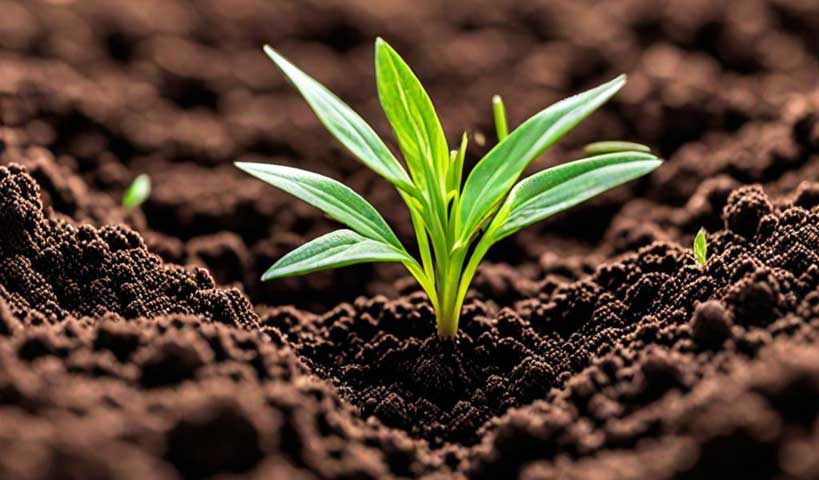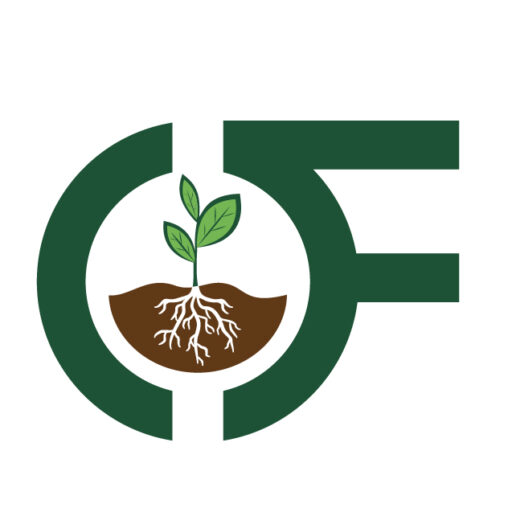The Impact of Soil Health on Hay Quality: Practices for Better Yields
At Ohana Farms, we understand that the foundation of high-quality hay begins with the soil. Soil health is a critical component of sustainable farming and directly impacts the nutritional value and yield of hay crops. In this blog, we’ll explore the importance of soil health, the indicators to monitor, and sustainable practices to enhance soil quality for better hay production.

(Black and white goat eating hay)
The Importance of Soil Health
Soil health is essential for optimal hay production. Healthy soil provides the necessary nutrients, water, and support for plant roots to grow robust and nutrient-rich hay. Poor soil health can lead to reduced yields, lower nutritional content, and increased susceptibility to pests and diseases. By focusing on soil health, farmers can ensure sustainable and productive hay fields. An impact of a farmer for soil health can mean greater quality feed for animals
Benefits of Healthy Soil
Healthy soil offers numerous benefits for hay production:
- Nutrient Availability: Healthy soil contains a balanced mix of essential nutrients, such as nitrogen, phosphorus, and potassium, that are crucial for plant growth.
- Water Retention: Good soil structure improves water infiltration and retention, ensuring plants have access to water during dry periods.
- Root Development: Healthy soil promotes strong root systems, enabling plants to absorb more nutrients and water.
Disease Resistance: Healthy soil supports a diverse microbial ecosystem that helps protect plants from diseases and pests.
Soil Health Indicators
Monitoring soil health involves assessing various physical, chemical, and biological indicators. Understanding these indicators helps farmers make informed decisions to improve soil quality.
Physical Indicators
- Soil Texture: The proportion of sand, silt, and clay affects water retention and root penetration. Loam soil, with a balanced texture, is ideal for hay production.
- Soil Structure: Good soil structure is crumbly and allows for air and water movement. Compacted soil can restrict root growth and water infiltration.
- Soil Depth: Deep soil layers provide more space for roots to grow and access nutrients.
Chemical Indicators
- pH Level: Soil pH affects nutrient availability. Most hay crops prefer a pH between 6.0 and 7.0.
- Nutrient Levels: Testing soil for essential nutrients (NPK) helps determine if fertilization is needed.
- Salinity: High salinity can hinder plant growth and reduce yields.
Biological Indicators
- Microbial Activity: A healthy soil microbiome supports nutrient cycling and disease suppression.
- Organic Matter: High levels of organic matter improve soil structure and nutrient availability.
- Earthworm Presence: Earthworms indicate good soil health as they improve soil aeration and nutrient mixing.
Sustainable Practices for Better Soil Health
Improving and maintaining soil health requires adopting sustainable farming practices. Here are some effective strategies that Ohana Farms implements to enhance soil quality for better hay yields:
Crop Rotation
Rotating hay crops with other plant species helps break pest and disease cycles, improves soil fertility, and reduces soil erosion. For example, rotating hay with legumes like clover or alfalfa can fix nitrogen in the soil, enhancing nutrient availability for subsequent hay crops.
Cover Cropping
Planting cover crops during the off-season protects the soil from erosion, improves soil structure, and adds organic matter. Cover crops like rye, oats, and clover also suppress weeds and enhance soil biodiversity.
Reduced Tillage
Minimizing tillage preserves soil structure, reduces erosion, and maintains organic matter levels. No-till or reduced-till practices help maintain soil health while reducing labor and fuel costs.
Compost and Organic Amendments
Adding compost and other organic amendments improves soil fertility, structure, and microbial activity. Organic matter increases water retention and provides a slow-release source of nutrients for hay crops.
Proper Grazing Management
Managing grazing to avoid overgrazing protects soil health. Overgrazing can lead to soil compaction, erosion, and nutrient depletion. Implementing rotational grazing ensures that pastures have time to recover and maintain healthy soil. How does overgrazing impact soil health?
Overgrazing significantly impacts soil health by depleting the vegetative cover that protects the soil from erosion and degradation. Without adequate plant cover, the soil becomes more susceptible to wind and water erosion, leading to the loss of nutrient-rich topsoil. This degradation reduces the soil’s ability to retain water and nutrients, which negatively affects plant growth and can lead to further land degradation. Over time, overgrazed lands can become barren and less productive, making it difficult to sustain healthy livestock and crop production. Sustainable grazing practices are essential to maintain soil health and ensure long-term agricultural productivity.
Soil Testing and Monitoring
Regular soil testing helps farmers monitor soil health and make informed decisions about fertilization and amendments. Understanding soil nutrient levels, pH, and organic matter content guides sustainable soil management practices.
The Role of Local Hay Suppliers in Soil Health
Local hay suppliers like Ohana Famrs play a crucial role in promoting sustainable soil health practices. By sourcing hay from local farms that prioritize soil health, we ensure that our customers receive high-quality, nutrient-rich hay for their livestock. Supporting local hay suppliers also contributes to the local economy and reduces the carbon footprint associated with long-distance transportation.
Community Education and Support
Ohana Farms is committed to educating our community about the importance of soil health and sustainable farming practices. We provide resources and support to local farmers, helping them adopt practices that improve soil health and hay quality. By fostering a community of informed and responsible farmers, we contribute to the overall sustainability of the Pasco & Tri-Cities farming community.
Enhancing Brand Authority and Credibility
By focusing on soil health and sustainable practices, Ohana Farms enhances its brand authority and credibility in the hay industry. Our commitment to quality and sustainability sets us apart as a trusted source of high-quality hay products. Customers can have confidence in our products, knowing that they are sourced from farms that prioritize soil health and environmental stewardship.
Conclusion
Soil health is the foundation of high-quality hay production. By understanding and monitoring soil health indicators and adopting sustainable farming practices, farmers can improve hay yields and quality. At Ohana Farms, we are dedicated to promoting soil health and supporting local farmers in Pasco & Tri-Cities. Our commitment to sustainability and quality ensures that our customers receive the best hay products for their livestock. By choosing Ohana Farms, you are supporting sustainable agriculture and contributing to a healthier environment.
Incorporating sustainable soil health practices not only benefits hay production but also enhances the overall health of our farming ecosystem. Together, we can build a more sustainable future for our community and our planet.

